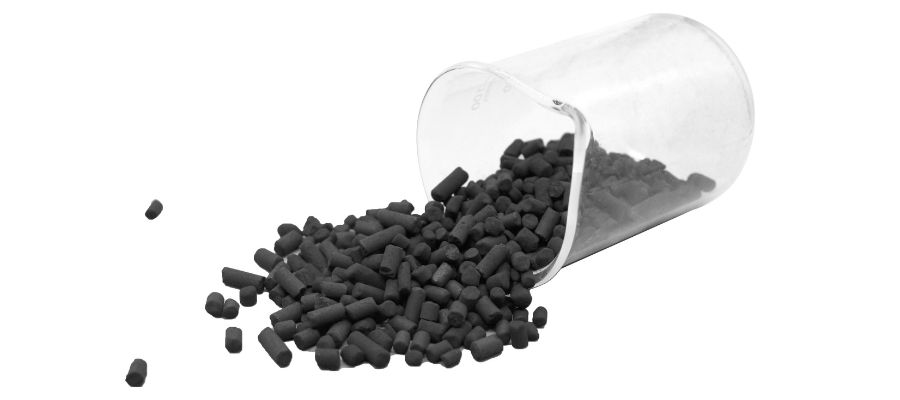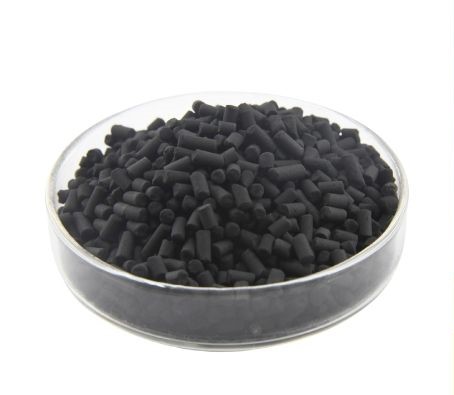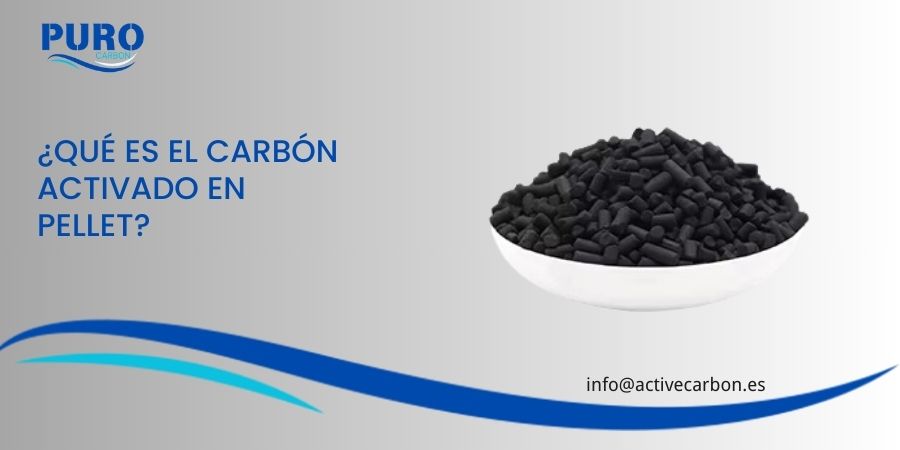Columnar activated carbon is a specialized form of activated carbon that has become popular in various industries due to its unique properties and effectiveness in a wide range of applications.
In this article, we will examine the definition of columnar activated carbon, its unique properties, its main areas of application and the advantages it offers. Whether you are an industry professional or a reader interested in purification technology, this article will provide you with a comprehensive understanding of this versatile material.
What Is Activated Charcoal Pellet?

Pellet activated carbon is a form of activated carbon in cylindrical or prismatic form. It is manufactured from specifically treated raw materials, such as charcoal, wood or coconut shells, and is noted for its excellent adsorption properties and abrasion resistance. The peculiar shape of the pellets not only improves its efficiency, but also makes it ideal for a variety of applications.
Activated Charcoal Pellet Production Method
The pellet activated carbon production process includes the following steps:
- Raw Material SelectionThe appropriate raw materials, such as charcoal, wood or coconut shells, are chosen according to the application. The raw material influences the pore structure and adsorption properties of the final product.
- CarbonizationThe selected raw materials are heated at high temperature in the absence of oxygen, eliminating volatile compounds and leaving a solid material rich in carbon.
- ActivationCarbonized material is subjected to physical or chemical activation to develop a porous structure. Physical activation uses steam or carbon dioxide, while chemical activation uses agents such as zinc chloride or phosphoric acid.
- Granulation and MoldingActivated carbon is pressed into pellet form by means of molds, ensuring the density and mechanical strength required for various applications.
- Screening and PackagingFinally, the activated carbon pellets are sieved to ensure uniformity in size and quality, and then packaged for transport and use.
Advantages of Activated Charcoal Pellet
Pellet activated carbon offers several key advantages:
- Optimal hydrodynamic propertiesThe pellet form allows a uniform flow of fluids in filtration systems, reducing pressure drop and improving efficiency.
- High Mechanical ResistanceActivated carbon pellets have a high resistance to fracture due to their manufacturing process, which makes them ideal for high flow applications of liquids or gases.
- Long LifeDue to their abrasion resistance and high adsorption capacity, activated carbon pellets have a long service life, reducing replacement frequency and maintenance costs.
- Efficient RegenerationPellet activated carbon can be regenerated, recovering its adsorption capacity, which makes it a cost-effective and sustainable option in the long term.
Pellet Activated Charcoal Application

Activated carbon pellets are used in various sectors, among which the following stand out:
Industrial Gas Treatment
It is very effective for the removal of contaminants and bad odors in industrial gas treatment systems, such as volatile organic compounds (VOCs), malodorous gases and hydrogen sulfide (H₂S). Its mechanical resistance and optimal hydrodynamic properties make it especially efficient in high flow systems.
Gold Recovery
In the gold recoverypellet activated carbon is used to adsorb gold ions from cyanide solutions, improving the efficiency of the gold recovery process.
Air Purification
Activated carbon pellets are used in air purifiers to remove harmful gases and odors, such as formaldehyde, benzene and other volatile organic compounds, improving air quality in residential and work spaces.
Desulfurization and Denitrification
In flue gas desulfurization and denitrification processes, pellet activated carbon is used to remove sulfur and nitrogen oxides, complying with environmental regulations and reducing pollution.
Solvent Recovery
Pellet activated carbon is very effective in the adsorption and recovery of solvents used in industrial production, reducing production costs and environmental impact.
Request a QuoteSelection Recommendations

When selecting the right pellet activated carbon, it is important to consider the following factors:
- Raw MaterialsThe choice of raw material influences the properties of activated carbon. Coconut shell carbon is ideal for fine applications, such as air and water purification, due to its developed pore structure. Coal-based carbon, with higher mechanical strength, is more suitable for industrial gas treatment.
- Pore DistributionDifferent applications require different pore sizes. Micropores are ideal for removing small molecules such as organic contaminants in water, while mesopores and macropores are more effective for adsorption of larger molecules, such as in solvent recovery and industrial gas treatment.
- Pellet SizePellet size affects hydrodynamic properties and adsorption efficiency. Smaller pellets provide larger surface area and better adsorption efficiency, while larger pellets reduce pressure drop and are more suitable for high flow systems.
- Adsorption CapacityDepending on the contaminants to be removed, it is important to select an activated carbon with the appropriate adsorption capacity. For example, in water treatment systems, you should choose an activated carbon that is effective in removing volatile organic compounds (VOCs) or heavy metals, while in gas treatment you should consider its ability to adsorb harmful gases such as H₂S.
Looking for Activated Carbon?
At PuroCarbon S.L., with more than 18 years of experience, we specialize in offering high quality pellet activated carbon products. Our products are ideal for applications in industrial gas treatment, air purification and solvent recovery, with exceptional performance in H₂S adsorption, desulfurization and denitrification processes.
If you need high performance pellet activated carbon, PuroCarbon S.L. offers customized solutions to help you achieve efficient and sustainable treatment. Do not hesitate to contact us at for more information about our products and services.
Frequently Asked Questions
Pellet activated carbon has a more uniform shape and higher density, resulting in lower pressure differential and better performance in fixed bed applications.
Yes, many types of pelletized activated carbon can be regenerated by thermal or chemical processes, allowing it to be reused.
Typical sizes range from 0.8 mm to 5 mm in diameter, but can be customized to specific application needs.
Yes, due to its ability to remove organic contaminants and its ease of handling, it is widely used in drinking water treatment systems.
The choice depends on a number of factors, such as the type of contaminant to be removed, process conditions and flow requirements. It is advisable to consult a specialist supplier for the most appropriate advice.
